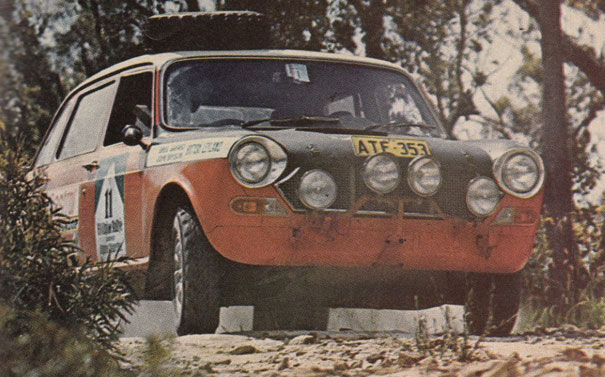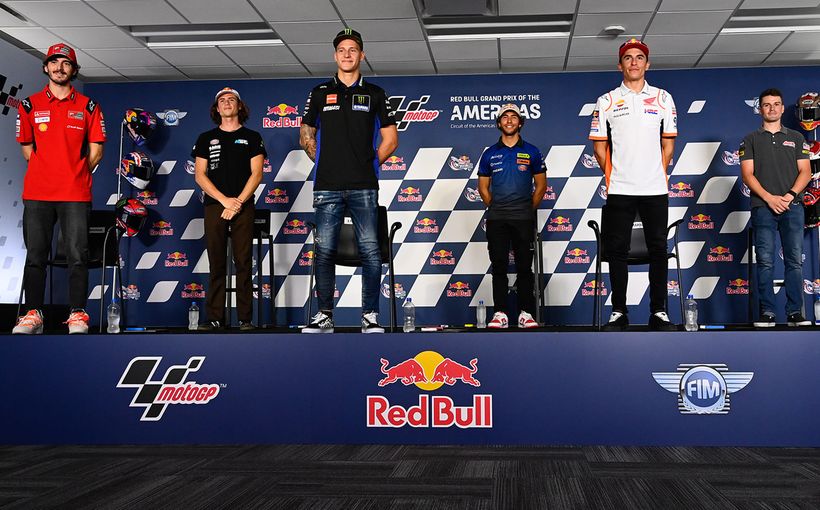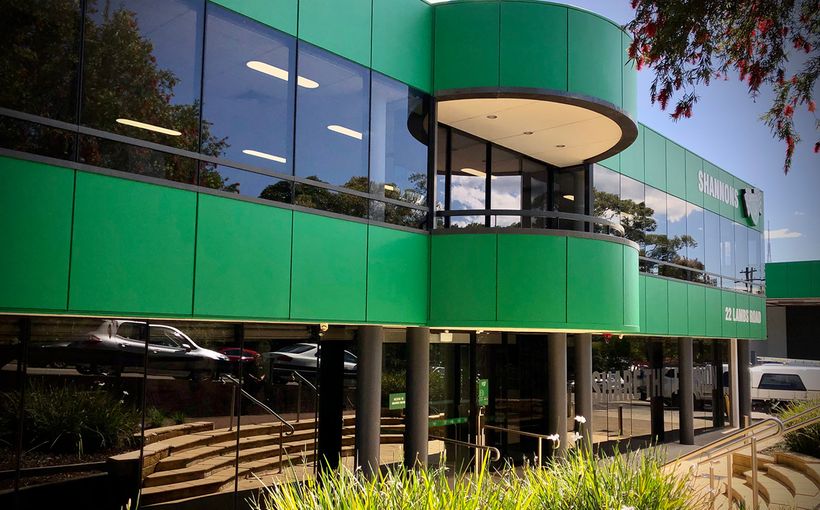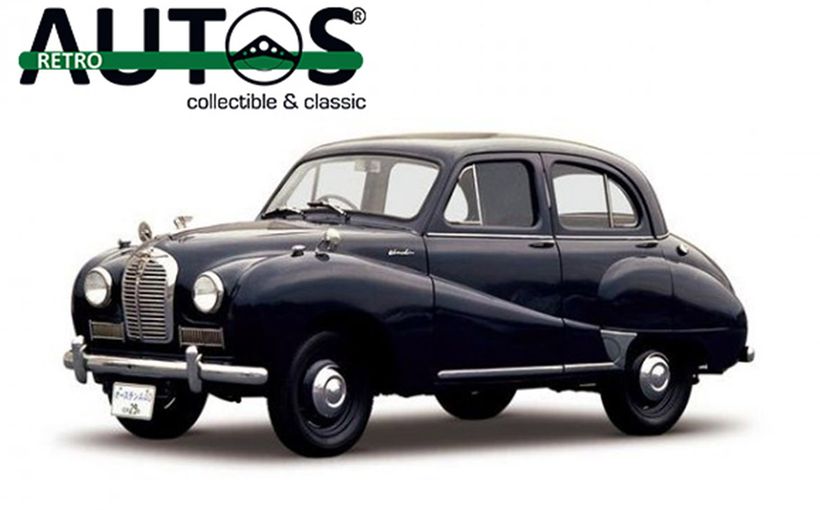Austin 1800: The car that should have won the 1968 London-Sydney Marathon

The Austin 1800 was one of world’s best long distance rally cars, proving its credentials with a near-winning performance in the 1968 London-Sydney Marathon. Here’s how one of the works cars looked when featured in the 1970 Australian Motor Racing Annual, being driven by Greg Garrard/John Bryson during the ’69 Australian rally season.
The all-Australian crew in one of four works-entered Austin 1800s was setting a cracking pace and looking ominously strong as the 16,000 km London-Sydney Marathon headed towards the crucial final stages.
Evan Green, ‘Gelignite’ Jack Murray and George Shepheard had paced themselves through the early stages of the Marathon to be sure their car was in good shape for the crucial final stages; they were eleventh in Turkey, eighth in Afghanistan and fifth in Western Australia. By South Australia, they were the top placed Australian crew.
Their more illustrious BMC team-mates had not been so fortunate. Irish ace Paddy Hopkirk had damaged his steering after running off the road in blinding dust in WA. Finland’s Rauno Altonen was experiencing gear selection problems. And UK star Tony Fall had broken a suspension upright in Iran and was struggling to make up lost time.
However, a fateful decision by Green in South Australia, to stop and help a fellow competitor stranded in the Flinders Ranges, would trigger a series of events that would conspire against a BMC victory. The fellow competitor Green stopped to help was none other than Andrew Cowan - who would go on to win the event!
“We couldn’t leave them there,” Green recalled in his widely acclaimed book ‘A boot full of right arms’ in which he noted that Cowan’s works-entered Hillman Hunter had left the road and ended up high-centred on a large ant-hill. “They’d never get off without some extra hands. And they looked slightly ridiculous.
“Besides, they were the crew we were trying to beat. Neither of us was likely to win the rally with less than a day to go – or so I thought – and we were level on points. To beat them because they were rocking on a bed of ants just didn’t seem to be in keeping with an event of such epic proportions as the London-Sydney Marathon.
“So we pushed the Hunter clear. Then we lost our wheel, Andrew Cowan won the rally and (Green’s BMC team-mate) Paddy Hopkirk finished second, a mere six minutes behind. Paddy and I are still friends but I sometimes wonder why. A win in the Marathon would have been a great climax to his career.”

BMC works driver Paddy Hopkirk staged a spirited fight-back to finish second in the London-Sydney. If not for some very sportsmanlike actions by both himself and his Aussie team-mates along the way, Hopkirk would have scored an historic victory for the Austin 1800.
What made Green’s surprise loss of a rear wheel all the more frustrating was that it had nothing to do with the proven ruggedness of the Austin 1800. It was simply human error.
After stopping for a brief service before tackling the Flinders Ranges, some helpers assisting the BMC works mechanics had checked to see if anything was loose and one of them over-tightened the rear wheel bearings.
Not long after, a bearing seized and according to Green “the back right-hand corner of the suspension fell off – tyre, wheel, brake drum, trailing arm, the lot.”
After being stranded for four hours waiting for replacement parts and a mechanic to be flown in, the Aussies were mobile again and from Menindee in far western NSW to Sydney set a string of fastest times. It was all to no avail, though, as they had lost too much time. They finished 21st.
It seems just about everyone had a hard luck story to tell after the London to Sydney. The fortunes of the BMC works team though, despite an honourable loss, serve to highlight what a fantastic world-class competitor it had in the Austin 1800.

In addition to the fancied BMC works cars, numerous Austin 1800s were entered by private teams. This Australian-entered car was driven by D.A Corbett but failed to finish the event. Note the four spare tyres carried on the roof.
An ideal long distance rally car
This humble four-door family sedan, with its 1.8 litre four cylinder engine and relatively heavy 1150 kg kerb weight, was not considered a potential competition car when launched in 1965, particularly given the phenomenal success of its smaller, lighter and faster Mini Cooper siblings.
However, long distance rallying requires a different mind-set to traditional forest rallies. To succeed in this discipline, the emphasis is not only on tank-tough construction but also low-stressed mechanicals, supple long travel suspension and good load carrying capacity.
And in that context, it soon became clear to BMC management that in the Austin 1800 they had an ideal contender for the more rugged long distance events that the smaller Minis were not well suited to.
BMC’s famous Competitions Department entered its first Austin 1800 in the 1965 Monte Carlo Rally, which led to expanded campaigns in longer and more rugged events like the East African Safari and car-busting Acropolis Rally.
These cars experienced the usual development problems related to suspension and engine, but BMC methodically came up with solutions to them all. By 1968, when the London-Sydney Marathon was announced, they had the right tool for the job.
The Austin 1800’s compact four cylinder engine it shared with the MGB was (like the Mini) mounted east-west across the engine bay, with its four-speed manual gearbox and front wheel drive transmission mounted directly under the engine.

Reach for the sky! Evan Green takes flight in his Austin 1800 at Melbourne’s Calder Park in 1969 during a demonstration run for the new sport of rallycross. This was one of several BMC works cars that remained in Australia after the London-Sydney to compete in local rally events. Andrew Cowan won the ’69 Southern Cross Rally in one of these cars.
That meant there were no vulnerable tail-shafts or rear axle assemblies exposed to the rough stuff and the neatly contained engine/gearbox unit could be well protected from damage.
The space-efficient mounting of the engine also meant that 70 per cent of the Austin 1800’s generous 106-inch wheelbase was available for luggage and passengers with ample leg room. Given the three-man crews and hefty equipment that would need to be carried in the Marathon cars, this was a major plus.
The four-door bodyshell was also very rigid and widely regarded as the strongest ever made by the company’s Longbridge plant. It was also blessed with short overhangs front and rear which kept most of the laden weight within the wheelbase for consistent ride and handling.
In addition to sharp rack-and-pinion steering and power-boosted front disc brakes, arguably the 1800’s greatest attribute in this application was its ability to literally ‘Float on Fluid’ as the corporate advertising claimed.
Its ‘Hydrolastic’ semi-active independent suspension, which connected actuators on all four wheels to a common hydraulic fluid circuit, responded to different road surfaces and driving styles with consummate ease.
All of these strong points added up to a vehicle which in competition would possess a rare ability to travel quickly over rough roads across vast distances, with enviable comfort and durability.

Another privately-entered Austin 1800 in the Marathon was this British car entered by the Hillcrest Motor Company. Unfortunately it was one of the 42 cars that didn’t make it to Sydney.
How BMC built the Marathon cars
The ‘68 London-Sydney Marathon was refreshingly thin on technical rules. Basically you could run almost any vehicle you wanted, as long as it had four wheels and only two were driven. Vital parts like the bodyshell and engine block were tagged, so if you had to change them you were out.
There was also a maximum height limit imposed so that the cars would fit in the hold of the P&O liner SS Chusan when the field was shipped from Bombay to Fremantle. And that was about it.
BMC’s Competition Department in Abingdon, renowned as one of the world’s pre-eminent rally operations, committed to building seven Austin 1800s for the Marathon. These cars would incorporate all that BMC had learned from its arduous East African Safari and Acropolis campaigns plus hundreds of hours of destructive testing in the UK.
The four official factory cars and their service car all featured UK rego plates starting with the letters SMO and were to be driven by the some of the sport’s biggest names from Britain, Scandanavia and Australia:
SMO 223G Service car
SMO 225G Rauno Aaltonen/Henry Liddon/Paul Easter
SMO 226G Paddy Hopkirk/Tony Nash/Alec Poole
SMO 227G Evan Green/’Gelignite’ Jack Murray/ George Shepheard
SMO 974G Tony Fall/Mike Wood/Brian Culcheth
The other two cars prepared by the factory were for teams drawn from defence personnel representing the Royal Air Force (Red Arrows) and Royal Navy. These cars were considered semi-works cars as they were not built to the same peak specification as the ‘SMO’ cars.

It’s all about being prepared. In this image from Gregory’s wonderful book ‘From Redex to Repco’ the all-Aussie BMC crew comprising (from left to right) Evan Green, George Shepheard and Jack Murray show how much equipment needed to be stowed aboard their works 1800 during the ’68 Marathon.
The Australian connection came about through Evan Green’s activities with BMC Australia, which had included overseeing the multi-car Mini Cooper S works team effort that won the 1966 Bathurst 500 and competing in local rallies himself driving BMC products with considerable flair.
With larger-than-life race and rally veteran Jack Murray (who had a habit of blowing things up with sticks of gelignite) and skilled map reader/mechanic George Shepheard to partner him, Green was confident he’d pulled together a strong combination.
The BMC Marathon cars were based on the newly introduced and sportier Mk2 1800S model. Starting with bare bodyshells, the emphasis was on reducing weight, so some of the window glass was replaced with Perspex and the doors, bonnet and boot panels were skinned in aluminium. The substantial sump guard was also made from lighter materials.
The bodyshells were beefed up in critical areas including two skins of floor metal and the boots were filled with twin fuel tanks that held a total of 26 gallons (118 litres), each with their own aluminium filler in each rear guard. These extra tanks took up so much space that, if required, two spare wheels could be carried on the roof.
The Hydrolastic suspension featured the system’s larger front actuators also fitted to the rear to cope with heavier loads on rough roads. Front and rear anti-roll bars improved higher speed handling and stability along with Koni adjustable shocks.
The 4.4:1 ratio rack and pinion steering was sharpened up with a drop to 3.25:1. This also increased the turning effort, which is why bus-sized steering wheels (16-inch diameter) were specified to improve leverage.

Another image of Evan Green at the Calder Park rallycross demo in ’69 testing the waterproofing of his electrical system in the works Austin 1800.
A stout ‘roo bar’ and powerful driving lights were mounted up front. Thick rubber mud flaps were fitted at each corner to shroud 13-inch Minilite magnesium wheels shod with an assortment of Dunlop rally tyres.
The engines were not highly tuned, as reliability was paramount for such a long distance event.
The cubic capacity was increased to 1894cc (some say 1846cc) and a standard MGB camshaft grind was chosen.
The heads were reworked to improve gas flow, entering through 1800S inlet manifolds equipped with dual 1.75-inch SU carbs and exiting through specially designed exhaust systems that tucked up well out of harm’s way.
This mild tuning setup produced a reliable 100 bhp, which was not much given the car’s hefty base weight plus all the extra equipment and three-man crew it had to carry.
Lightened flywheels and rugged competition clutches were fitted, with the standard gearbox ratios matched to a typically short 4.1:1 final drive ratio for improved acceleration.
The interiors were decked out with a special rear seat that could be converted into a makeshift bed. The spacious cabins also featured roll cages, rally seats with four-point safety harnesses, extra switch panels, Halda Twinmaster navigation units and 100 mph (160km/h) speedometers.
Given that the finished cars - with full tanks and three crewmen on board - were claimed to weigh close to 2,000 kgs, it gives you some idea why the 100 mph speedos could be considered optimistic.
Evan Green recalled that the highest top speed he saw during the Marathon was only 90 mph (145 km/h) which occurred when descending the steep Lataban Pass in Afghanistan. He noted that his near two-tonne Austin 1800 was one of the fastest cars down the mountain, helped by its temporary loss of brakes due to severe fade!

Evan Green impressed many with his Austin 1800’s leech-like grip in the loose stuff and its tank-tough construction. These works cars were superbly designed and built for the harshest treatment that long distance rallying could dish out.
Even so, BMC’s preparation was typically thorough and well planned, not only in the building of the Marathon cars but also in driving the entire 16,000 km route prior to the event, as numerous rival works teams did.
This was done initially in a purpose-built Austin 1800 survey car. However, it suffered such severe damage to its suspension and engine on what would be the first leg of the event between London and Bombay that it covered the final part of its trip to India on the back of a truck and was eventually abandoned.
Lessons learned from that harrowing journey were applied to the preparation of the Marathon cars back in England before a second survey of the same route, this time in the official service car (SMO 223G) was successfully completed.
One of the British navigators, Henry Liddon, ended up surveying the entire route to provide vital notes for the works team, joining Evan Green and his Aussie crew for a thorough recce of the Australian leg from Fremantle to Sydney. They drove through some of the more difficult sections several times, to be sure they could clean-sheet them without loss of points.

Austin 1800s continued to compete in local rally events for years after their great showing in the ’68 London-Sydney Marathon. This example driven by Rick Stevenson/Richard Jackson at Sydney’s Oran Park took part in the 1971 Dulux Rally which featured special stages on a mix of gravel roads and race tracks.
1968 London-Sydney Marathon: The Tortoise beats The Hare
The seed for this epic motor sport challenge was planted by the UK’s Daily Express newspaper in London, which wanted to sponsor a huge motoring event that would showcase British engineering and organisational abilities in front of a global audience.
After the Daily Express posted a rich 10,000 pounds Stirling first prize, Sir Frank Packer’s Daily Telegraph newspaper in Sydney backed the Australian leg, offering additional cash prizes for second and third and the highest-placed Australian team.
With these big circulation daily papers backing the Marathon at both ends, it created great publicity and attracted entries from all over the world.
Interest was naturally strongest in the UK and Australia. More than 800 entries were lodged, from which only 100 were accepted. British teams represented 57 of those 100 entries compared to 18 Australian crews. There were also some serious contenders from several European countries.
The 16,000 km course passed through 10 countries on the first leg from London to Bombay which included England, France, Italy, Yugoslavia, Bulgaria, Turkey, Iran, Afghanistan and Pakistan to the Indian coast.
Each competitive stage had a maximum allowed time, beyond which competitors accumulated penalty points based on one point for every minute late. Several of the top teams avoided any time penalties or ‘clean-sheeted’ this first leg.
Of the 98 starters that left London on November 24, only 72 reached Bombay. On December 5 the surviving cars and crews departed India aboard the SS Chusan and after a nine-day voyage docked in Fremantle. The following day they left Perth for another epic drive, this time to the other side of Australia. Only 56 of the original 98 starters would make it to Sydney on December 18.

Finnish race and rally star Rauno Aaltonen was one of the BMC team’s top guns in the ’68 Marathon. Despite battling gear selection problems in the Australian leg, he still finished in fifth place just 18 minutes behind the winning Hillman.
From the start ‘The Hare’ had been British rally ace Roger Clark and his Swedish co-driver Ove Andersson in a works-entered Ford Lotus-Cortina Mk II. They led all the way to Bombay and were blitzing the field during the Australian leg too until engine problems in South Australia and ultimately differential failure in Victoria ended their gallant run.
At that stage there were only a handful of points separating new leaders Lucien Bianchi/Jean Claude Ogier in their Citroen DS21 and their closest pursuers, including Lampinen/Staepelaere in a German-entered Ford Taurus, Hopkirk/Nash/Poole in their works Austin 1800 after a brilliant fight-back and Cowan’s Hillman in fourth.
Pushing very hard to try and catch the leading Citroen, the Ford Taurus clipped a cattle grid post and crashed out, leaving Bianchi/Ogier headed for certain victory in what appeared to be a brilliantly judged drive.
However, they were to meet some terrible misfortune of their own with less than 200 kms to go and no more competitive sections to run. With Ogier at the wheel and Bianchi snoozing in the passenger seat, the leading Citroen collided heavily with a spectator’s car that should never have been on the course. Both cars were severely damaged and Bianchi was badly injured.
At this point, Hopkirk came across the dreadful crash scene and, in an honourable act of sportsmanship, abandoned any hopes of winning the Marathon by returning to a spectator position he had passed earlier to arrange for an ambulance to be radioed in.

Paddy Hopkirk finished a very honourable second in the London-Sydney after throwing away any chance of a win by stopping to assist the badly injured Citroen crew. Here the mercurial Irishman is captured at full speed through the Australian dust.
As a result, Andrew Cowan/Colin Malkin/Brian Coyle became the surprise winners of the 1968 London-Sydney Marathon, in their Rootes Motors-prepared Hillman Hunter.
It was the same car which Evan Green and his Austin 1800 crew - then level on points with Cowan - had helped get unstuck in the Flinders Ranges. And the same car which Cowan had personally requested to be “built to come last’’ which was his way of saying that only a very solidly built and low-stressed car could win such an epic event.
Hopkirk’s Austin 1800, which finished second only six minutes behind the canny Scot after 16,000 kms of competition, was built by BMC with the same ‘Tortoise vs Hare’ philosophy to that of the winning car.
It was the right strategy of course. And if not for the honourable and sportsmanlike actions of Green and Hopkirk, could so easily have been the winning car.
Protect your Austin. Call Shannons Insurance on 13 46 46 to get a quote today.









